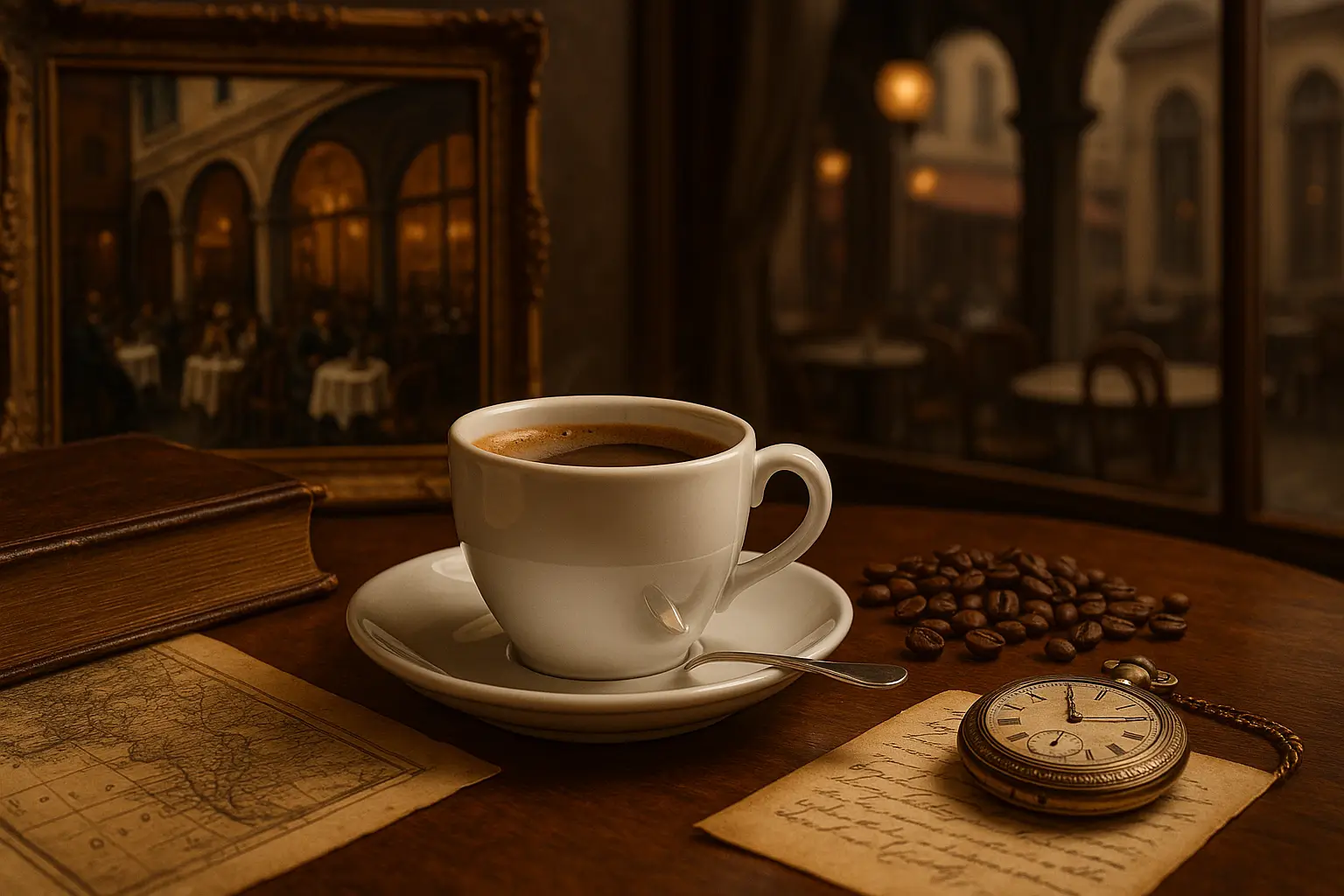Coffee is one of the most consumed beverages in Europe today, but that wasn’t always the case. Its arrival on the continent sparked controversy, curiosity, and eventually, cultural transformation. From Ottoman trade routes to Parisian cafés and Viennese coffeehouses, the story of coffee in Europe is rich with intrigue, revolution, and refinement. In this article, we’ll explore how coffee made its way to Europe and became an iconic part of its culture.
The Arrival of Coffee in Europe
Coffee first arrived in Europe in the 17th century, introduced through trade with the Ottoman Empire. Venetian merchants were among the first Europeans to encounter coffee in the Middle East and bring it back to Italy.
Key Entry Points:
- Venice (Italy): First European city to formally trade coffee in the early 1600s.
- Vienna (Austria): Popularized after the Battle of Vienna (1683) when coffee was allegedly discovered among abandoned Ottoman supplies.
- London (England): Home to the first coffeehouse in 1652.
- Marseille (France): French traders brought coffee from the Middle East and later introduced cultivation in colonies.
At first, coffee was a luxury commodity, consumed by the elite and sold in apothecaries as a medicinal tonic.
The Rise of the European Coffeehouse
As coffee’s popularity grew, it began to be served in dedicated establishments. These coffeehouses quickly became hubs of social, intellectual, and political life.
England:
- London’s coffeehouses were called “penny universities” because for the price of a cup, one could join discussions with scholars, writers, and politicians.
- They played a key role in the rise of the Enlightenment, capitalism, and even the insurance industry (Lloyd’s of London began in a coffeehouse).
France:
- Parisian cafés became cultural landmarks during the 18th century.
- Thinkers like Voltaire, Rousseau, and Diderot frequented cafés to discuss philosophy and politics.
- Cafés later became gathering spots for revolutionaries during the French Revolution.
Austria:
- Viennese coffeehouses combined elegance with intellectual debate.
- Known for pastries, newspapers, and slow enjoyment, these cafés are now UNESCO-recognized cultural spaces.
- Artists, poets, and politicians spent hours discussing culture and politics over coffee.
Cultural and Religious Controversies
Not everyone welcomed coffee with open arms. When it arrived in Europe, coffee was sometimes called:
- The “bitter invention of Satan” by conservative clergy
- A drink that incited rebellion or laziness depending on who was drinking it
In 1600, Pope Clement VIII was asked to condemn coffee. After tasting it, he supposedly said:
“This devil’s drink is so delicious… we should cheat the devil by baptizing it!”
That papal approval helped coffee gain widespread acceptance across Catholic Europe.
Coffee and Colonial Expansion
Europe’s obsession with coffee didn’t stop at consumption. As demand grew, European powers sought to control production.
Major Developments:
- Dutch planted coffee in Java (Indonesia).
- French brought coffee to Martinique and Réunion.
- Portuguese introduced coffee to Brazil, which would become the world’s largest coffee producer.
- British and Spanish cultivated coffee in Jamaica and Colombia, respectively.
This expansion made coffee a central part of colonial economies, often relying on enslaved labor and plantation systems.
Coffee in Modern European Culture
Today, coffee is deeply woven into daily life across Europe—with each country developing its own rituals and preferences.
Italy:
- Home of espresso, cappuccino, and café culture.
- Coffee is consumed standing at bars, and cappuccino is reserved for the morning.
France:
- Café au lait is served with breakfast, while espresso dominates in the afternoon.
- Cafés remain central to literary and social life.
Scandinavia:
- Among the highest coffee-consuming regions in the world.
- The fika tradition in Sweden involves coffee and pastries during social breaks.
Germany and Austria:
- Kuchen und Kaffee (cake and coffee) is a cherished afternoon ritual.
- Vienna’s coffeehouses continue to be cultural institutions.
Spain:
- Coffee is enjoyed several times a day, often in the form of café con leche or cortado.
- Often paired with churros or toast in the morning.
Final Thoughts: A Drink That Shaped a Continent
Coffee in Europe is more than a drink—it’s a cultural institution, a philosophical companion, and a social equalizer. From aristocrats in Vienna to revolutionaries in Paris and traders in London, coffee has touched every corner of European history.
Today, the tradition lives on in cafés, conversations, and the simple joy of starting the day with a fresh brew. To sip coffee in Europe is to take part in centuries of culture, conflict, and creativity.
